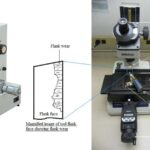Molecular biology 11 Views 1 Answers
Sourav PanLv 9September 18, 2024
Which is part of a DNA sequencing technique that is useful for high-throughput sequencing, but is not part of Sanger DNA sequencing?
Which is part of a DNA sequencing technique that is useful for high-throughput sequencing, but is not part of Sanger DNA sequencing?
Select one:
a. Using dideoxynucleotides as chain terminators
b. Removal of a chemical group that blocks the 3′ end of the new DNA strand
c. Labeling deoxynucleotides with fluorescent tags
d. Separating DNA by size using gel electrophoresis
e. Hybridization between the template and a primer
Please login to save the post
Please login to submit an answer.
Sourav PanLv 9May 15, 2025
The correct option is:
c. Labeling deoxynucleotides with fluorescent tags
Explanation:
- a. Using dideoxynucleotides as chain terminators: This technique is specific to Sanger sequencing, where dideoxynucleotides are used to terminate DNA chain elongation, generating fragments of varying lengths for sequence determination.
- b. Removal of a chemical group that blocks the 3′ end of the new DNA strand: This is part of some high-throughput sequencing technologies but not specific to the general concept of high-throughput sequencing as a distinguishing feature.
- c. Labeling deoxynucleotides with fluorescent tags: This is a feature of high-throughput sequencing technologies, such as Illumina sequencing. Fluorescently labeled nucleotides are used to detect the incorporation of each nucleotide during sequencing-by-synthesis, which is not part of the Sanger sequencing method.
- d. Separating DNA by size using gel electrophoresis: This technique is used in Sanger sequencing to separate DNA fragments, but high-throughput sequencing methods often use different approaches, such as optical detection and sequencing-by-synthesis.
- e. Hybridization between the template and a primer: Hybridization is used in both Sanger and high-throughput sequencing techniques to initiate the sequencing process. It is not a unique feature distinguishing high-throughput sequencing from Sanger sequencing.
0
0 likes
- Share on Facebook
- Share on Twitter
- Share on LinkedIn
0 found this helpful out of 0 votes
Helpful: 0%
Helpful: 0%
Was this page helpful?




